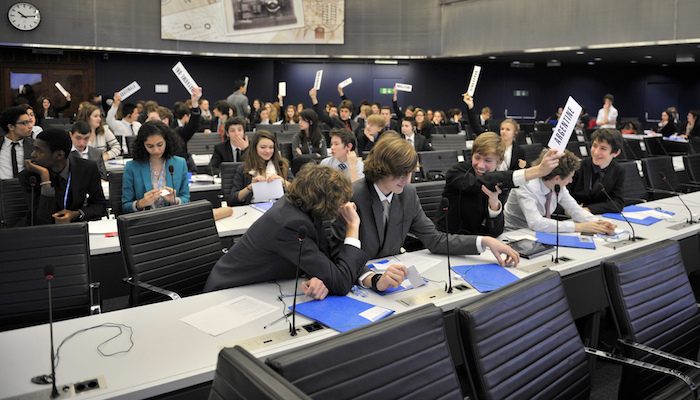
The first concern of any student enrolled in International Studies programs is to verify whether theories, models and paradigms, learned on textbooks and during classes, have a concrete utility and can really explain the current world.
At the University of Catania, within the Masters programme on Global Politics and Euro-mediterranean Relations (GLOPEM), I give a course on Global Civil Society and I have been thinking, over the years, on the best ways to connect students to more practical activities. I usually use the main findings of my research and fieldworks to discuss with them, stimulate their curiosity and develop critical abilities. However, the real turning point was when I read, by chance, an article on the use of simulations as a teaching tool. As a member of a non-governmental organisation working on women’s empowerment, I had the chance to attend some workshops and sessions organised at the UN level for instructing members. Then, I decided to use such experience to improve my teaching.
I involved my students of Global Civil Society in something I called ‘NGO simulation’. I have split them into smaller groups and asked to ‘build’ an NGO profile (in terms of identity, geographical location, objectives and tools). Then, I presented to all groups a call for projects to be submitted to international donors (the European Commission, or various UN agencies). They had basically to prepare a project (including the rationale, the selected partners and the budget), in order to fulfil a given request (usually something to be built or developed in a troubled country, affected by war, natural disaster, economic and social deprivation, etc.). I organised two different sessions, for allowing students to get familiar with their group and plan the activities. A collective public session was held based on groups leaders, presenting their projects and trying to get funds from donors. Finally, a debriefing assembly gave to students the chance to express their appreciation or concern and to me the possibility of assessing the activity within the course.
Since then, I have replicated the NGOs simulation in the following years, by shaping sessions and scenarios, according to students’ feedback and needs, as well to the current international situation.
I have started to be more and more familiar (and enthusiastic) with simulation games. Within the same course, I use different scenarios, assign roles to students and organise negotiation sessions for various purposes, namely conflict resolution, peace talks and NGOs project design and implementation.
Through these experiences and according to student feedback, I can affirm that including a simulation in a IR course presents at least three main benefits:
- It stimulates students’ curiosity and commitment to the course. All students have a role and have to fulfil a specific purpose, which is essential, in various ways to the completion of the general objective;
- It is a very powerful learning tool. Students have to study and analyse the given scenario, which always requires additional readings and source investigations;
- It encourages and develops students’ skills, expertise and relational abilities, since they are pushed to play different roles and behave accordingly.
Even though they obviously require more effort and time by instructors, I strongly believe simulations can be the dynamic tool which can be combined with traditional lectures and basic readings and make a course more interactive and involving for students. This can be applied to all subjects. However, for an extremely changeable and fluid object – as the global political system certainly is – this can become essential.
Further Reading on E-International Relations
- Teaching International Relations as a Liberal Art
- Teaching and Learning Professional Skills Through Simulations
- Working with and Supporting Teaching Assistants
- What to Do When You Don’t Like a Topic You Teach?
- Getting the Most Out of Class Discussion
- Teaching International Relations Through Short Iterated Simulations